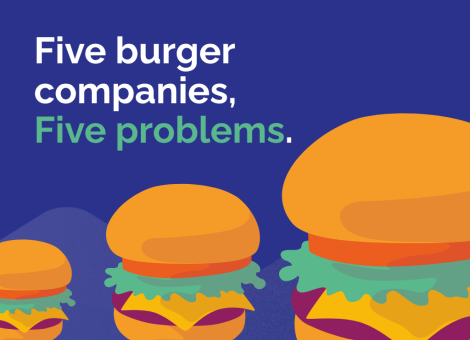Restaurant location strategy: the evolution of urban locations
As restaurant and retail brands mature and open new units, it’s natural to shift location and growth strategy. Then throw a global pandemic into the mix where people aren’t going into the office for months at a time and that will really change a restaurant operators’ ways of expanding and operating.
In this article we sit down with Ian Courtnage, CEO of Evergreens, who gives a first-hand account of a shift in their restaurant location strategy. The Seattle-based restaurant has traditionally operated urban units and is evolving as the consumer does.
Give us a high-level overview Evergreens for anyone that might not be familiar with the brand.
Evergreens is a Seattle-based healthy, fast casual restaurant founded in 2013 with 18 locations across the greater Seattle and Portland markets. We believe that the health and wellness of our consumers is linked to easy access to delicious, customizable, and healthy food served by an amazing team. We offer salads, wraps, and grain bowls made in minutes throughout the downtown core, urban, suburban, and airport locations in our two existing markets.
What has your traditional restaurant location strategy been?
At Evergreens, our portfolio has traditionally been focused on the central business district and driven by the lunch daypart serving the office professional market. We have branched out over time to urban areas with a mix of workforce and residential population, as well as suburban locations. Density was our friend.
Our current portfolio breakdown is:
- 8 downtown
- 4 urban
- 4 suburban
- 2 non-traditional
What is the real estate site criteria for Evergreens and what has changed over the last 12-18 months?
- 800-1,500 +/- square
- Sufficient office worker density
- Strong daytime population
What has changed has been as much about expanding our trade area targets as it has been about learning what doesn’t work. The majority of the portfolio had less than 18 months of operating time prior to COVID, and that was during a moment of strong growth and 15%+ comps for three straight quarters.
As we emerged from COVID and better understood the dynamics in play across the portfolio, we have learned a lot about what makes a successful store – and how different those dynamics are in different trade areas.
For example, quality of co-tenancy is almost irrelevant in the downtown core assuming sufficient office occupancy levels, whereas it matters immensely in suburban shopping centers. Sufficient food synergy is again a big driver in suburban areas where you often see shoppers searching for food for multiple people, whereas downtown consumers are typically shopping only for themselves.
We are now focused on smaller restaurant locations, limited seating, and simple buildouts to ensure we can ‘control our controllables’ and set ourselves up for reasonable hurdles. What I mean by controlling our controllables is limited or no indoor seating, smaller footprint restaurants and pickup windows.
There is strong population growth in suburban markets and Evergreens has turned to suburban markets for expansion. What is the thought around this shift?
It is an incredibly difficult moment to be selecting real estate for any restaurant brand. Construction costs are astronomical, the retail market still hasn’t come off sky high rent per square foot, and picking the right trade area for the next ten years might explicitly conflict with the right trade area for the next 18 months.
My personal bias is that suburban markets in many locations are grossly overserved – or will be in the near future – as everyone pivoted during the pandemic. My guess is that suburban comps, particularly for drive-thrus, peaked in 2021 and have slowly been coming back to earth. Brands likely saw that success and continued doubling-down on suburban locations in a vacuum and will look up 2-3 years from now and realize the pie is shrinking and there are more brands competing for their slice.
The safest bet is likely in those middle density markets – not the suburbs, but not the downtown core – where you have resiliency from both residential population as well as moderate office occupancy levels. I do believe that, in the medium-term, downtowns will begin to regain their vibrancy as cities figure out how to best use those spaces. While everyone is quick to say remote work will exist in perpetuity and downtown is dead, there is far too much capital invested in real estate for the collective downtown cores to fail.
Taking a step back from thinking of trade areas within a given market, market selection is where most brands tend to get tripped up – both in terms of selection of the markets themselves, as well as infill strategies. The last three years have seen drastic pivots towards certain markets – some temporary, some enduring – and the underlying cost dynamics have changed markedly.
For example, Boise, Idaho saw tremendous growth during the pandemic and brands began – or continued – expansion into the market. The problem is that you now have a midsized city with the cost profile of a major metro – wages and rental costs per square foot are not dissimilar from a Seattle or Portland at this point – but with far less population density.
Look at Sweetgreen as a fascinating case study in market selection. They are opening Michigan and Indianapolis, amongst other markets this year. Having experience in these markets, the focus on the Midwest for a premium restaurant brand is interesting; perhaps they are taking a page from the Chipotle playbook and anchoring to towns with large universities.
In my experience, focusing on metros with shrinking populations and lower levels of affluence for an upmarket brand doesn’t yield massive success. Their approach to infill makes sense, though, as they appear to be dropping 3-5 new units at a time to some level of critical awareness and density.
What is your team seeing as far as available real estate goes?
The actors in the market do not seem to have caught up with the reality just yet. Downtown landlords aren’t adjusting rent expectations or seriously contributing to TI allowances in most cases despite low occupancy levels. At the same time, suburban landlords still appear to think they are king with sky-high rates, grand shopping center renovation projects and little willingness to negotiate or provide much in improvement allowances. For smaller brands, the willingness of the large, well-capitalized brands to pay well above market – or fair value – for sites suburban areas means our level of conviction needs to be exceptional to justify the rent (and the buildout cost). The dynamics will inevitably shift over time but, in the short-run, slam-dunk deals in suburban locations will be tough to come by for younger brands with limited capital.
How is your restaurant selecting new markets and evaluating real estate strategy shifts? Contact our team to learn how we help define trade areas and identify the best sites and markets for new unit deployment.
Read more articles about:
Location intelligenceSubscribe and get the latest updates
You may unsubscribe from our mailing list at any time. To understand how and why we process your data, please see our Privacy & Cookies Policy
Related Posts
Location intelligence
Five burger companies, five problems
These burger brands had challenges from international growth to understanding franchise locations cannibalization,...

Location intelligence
Market Optimizer: Demo video
Market Optimizer allows users to strategically grow their network in existing markets while balancing revenue...


